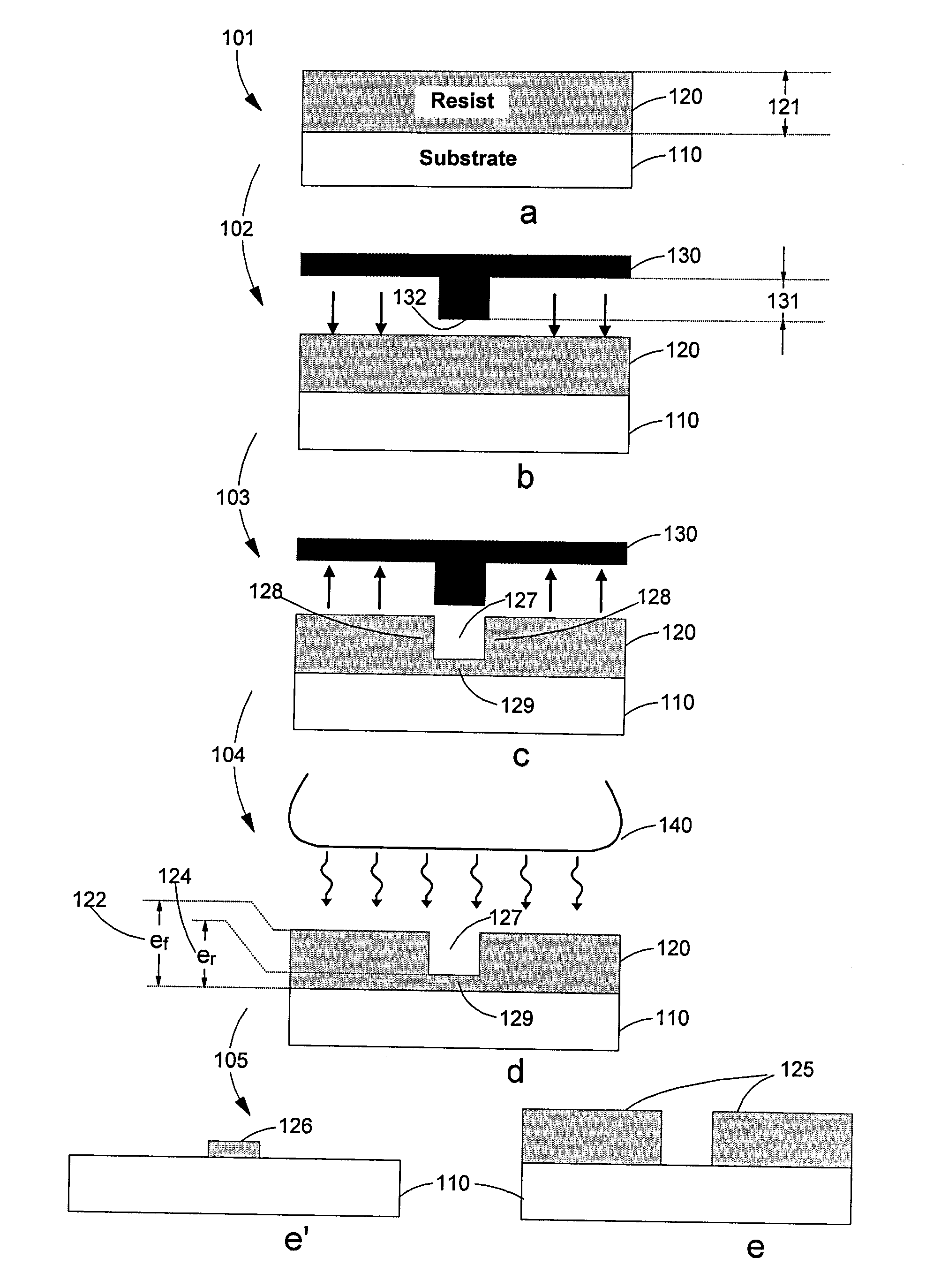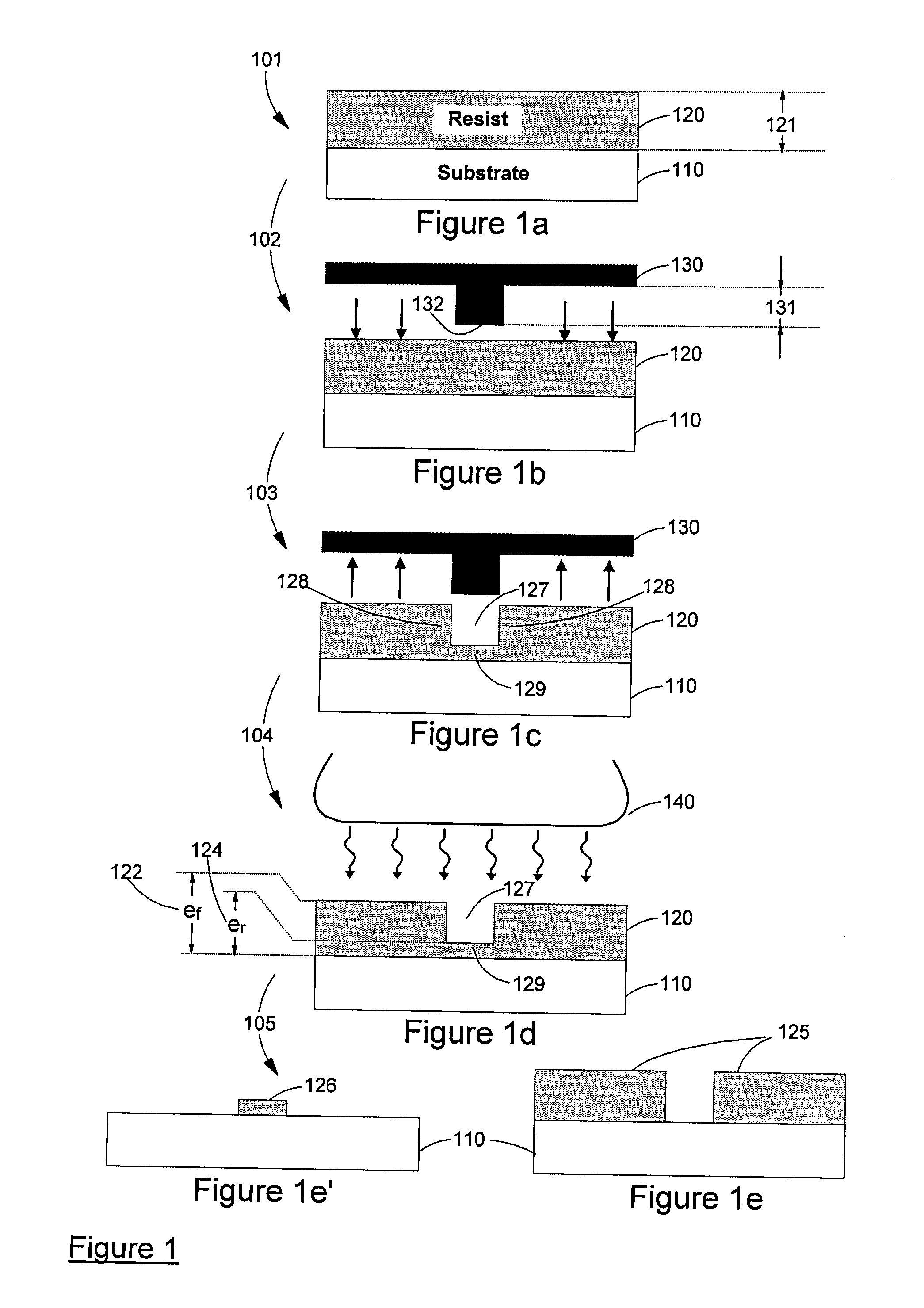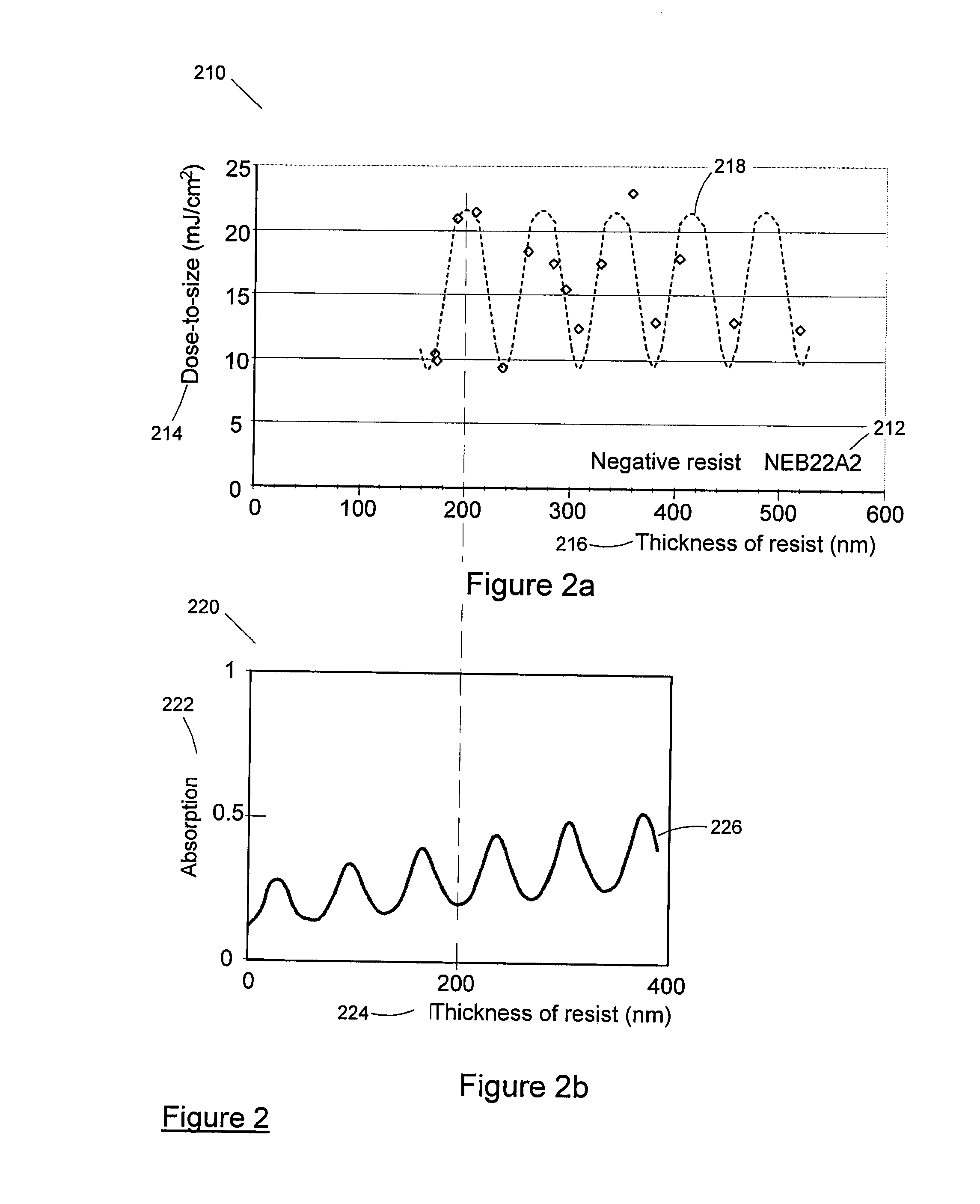Nanometric imprint lithography method
a lithography method and nanotechnology, applied in the field of lithography methods, can solve the problems of large investment, long implementation time, and difficult to remove the residue present in the bottom of the nanoimprinting pattern, and achieve the effects of reducing the resistance, and reducing the cost of implementation
- Summary
- Abstract
- Description
- Claims
- Application Information
AI Technical Summary
Benefits of technology
Problems solved by technology
Method used
Image
Examples
Embodiment Construction
[0060]FIG. 1, which comprises FIGS. 1a to 1e′, illustrates the steps of the improved nanometric imprint lithography method of the invention.
[0061]On the substrate 110 where, on the surface, it is wished to reproduce and etch patterns that will contribute to the production of a device being manufactured, a layer of a photosensitive resist 120 is deposited, for example, of the type used in a standard manner by the microelectronics industry for optical lithography. The invention makes no assumption on the type of substrate by which the method of the invention is implemented. In particular, the substrate may for example already comprise numerous layers (not shown) on the surface, in which patterns may already have been previously defined, with the method of the invention, or by other means in particular using conventional optical lithography or electronic lithography.
[0062]As shown in FIG. 1a, the first step 101 therefore consists of depositing on the surface a layer of resist preferabl...
PUM
| Property | Measurement | Unit |
|---|---|---|
| wavelength | aaaaa | aaaaa |
| thickness | aaaaa | aaaaa |
| thicknesses | aaaaa | aaaaa |
Abstract
Description
Claims
Application Information
 Login to View More
Login to View More - R&D
- Intellectual Property
- Life Sciences
- Materials
- Tech Scout
- Unparalleled Data Quality
- Higher Quality Content
- 60% Fewer Hallucinations
Browse by: Latest US Patents, China's latest patents, Technical Efficacy Thesaurus, Application Domain, Technology Topic, Popular Technical Reports.
© 2025 PatSnap. All rights reserved.Legal|Privacy policy|Modern Slavery Act Transparency Statement|Sitemap|About US| Contact US: help@patsnap.com



